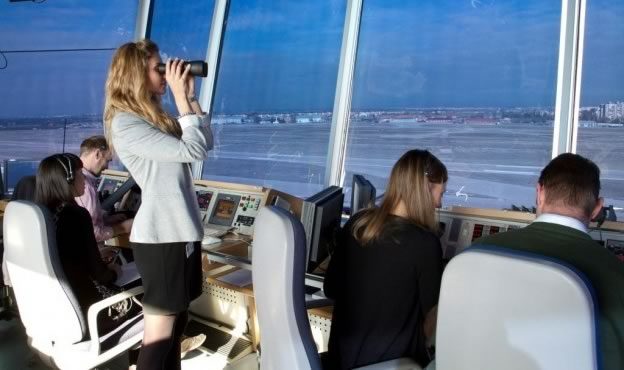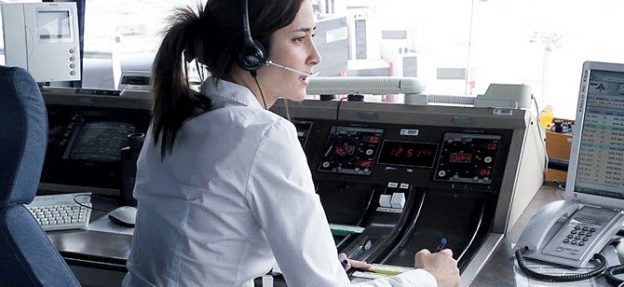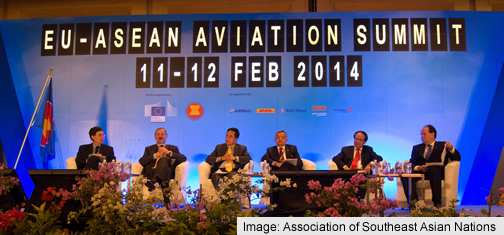FerroNATS: A Spanish success story
12 June 2015New beginnings are always hard. Now that more than 35 million passengers have passed through the airports whose air traffic is controlled by FerroNATS, and with management of over 500,000 flights under our belt, we barely have the time to look back and remember how it all started.
But there was a beginning and getting from there to here required a lot of hard work.
In 2011 the Spanish government decided that the time had come to open the national air traffic control sector up to competition in search of efficiency gains. Against this backdrop, the government tendered air traffic control service concessions for 12 Spanish airports divided into three different lots.
FerroNATS, a company recently created by means of an alliance between Ferrovial Servicios – the Ferrovial Group’s services division, a benchmark player in the infrastructure and services management arena – and NATS – the UK’s leading provider of air traffic management services – decided to bid for the tender that had whetted the appetite of all of Europe’s top air traffic control service providers. And it was very successful, winning the concessions for two of the lots, which included nine control towers. The airports where these control towers were located – Sabadell, Madrid Cuatro-Vientos, Vigo, Jerez de la Frontera, A Coruña, Valencia, Seville, Ibiza and Alicante – were very varied by type, including general aviation airports, facilities with difficult weather conditions and major commercial airports with more than 10 million passengers a year.
The brave decision to introduce competition in this sector, in a market such as Spain where tourism is such an important industry, was unquestionably a unique opportunity for improving the system. The ATM Cost-Effectiveness (ACE) report published by EUROCONTROL in 2009 had highlighted that costs in Spain (expressed in terms of ATCO employment costs per ATCO hour) were well above the sector average: €193 compared to the European average of €98 (97% higher) and €103 in the UK (+87%). The introduction of competition, framed by adequate regulation and supervision in order to guarantee compliance with the most stringent European standards, emerged as the clear path towards a more dynamic and passenger-oriented sector.
Despite the clear benefits that competition had introduced in the various sectors of the aviation industry, the air traffic control segment remained largely monopolistic and domestic. Whereas it is totally normal to cross the English skies in an airplane operated by a German company, buy food in an Italian terminal that was prepared by a French franchise, pick up baggage that was put on the conveyor belt by a Swiss handling company or travel to a Scottish airport owned by a Spanish company, it is total out of the ordinary to pinpoint cases of genuine competition among air traffic control service providers.
Spain has pioneered this new paradigm by virtue of this deregulation process. Today, in 2015, we can claim that the outcome has been very positive: enhanced punctuality, shorter taxi times and lower operating costs.
FerroNATS, in two short years, has assumed responsibility for the management of nine control towers after a switchover process that culminated with the change of air traffic control services provider. The successes reaped are shared by the entire Spanish aviation system and the agents involved: the Spanish Agency for the Safety of Aviation as Supervisor (AESA), the Directorate of Civil Aviation as regulator (DGAC), the outgoing provider (ENAIRE), the airport manager (AENA) and the incoming provider (FerroNATS). All of these organisations and companies played a crucial role in achieving these milestones as the process required a huge coordination effort that highlighted, yet again, the industry’s ability to tackle complex change with success and innovative flair.

From FerroNATS’ standpoint, the process posed major challenges: selecting and hiring more than 100 air traffic controllers in just eight months, submitting the transition documentation required by a change of supplier for AESA approval, successful completion of the various training processes at the control towers and, ultimately, the transfer of responsibility, with a previous process of a technical due diligence for the tower equipment.
Throughout the preparatory phase FerroNATS relied heavily on all the resources available at the European and regulatory levels. Against this backdrop, it tapped the training expertise of SENASA, Spain’s traditional ATC training school, FTEJerez, the first private school certified for the provision of ATC training in Spain, and EPN, the benchmark European facility for ATC training, based in Sweden. In short, it leveraged the capabilities built up in Europe throughout the years to ensure that the process went off without a hitch.
In parallel, the staff of air traffic controllers put together by FerroNATS was fed by a select mix of Spanish trainees and experienced professionals from the Spanish Air Forces, NATS (from airports such as Heathrow and Stansted) and other European providers. The existence of a single European air traffic controller licence (recognised in all EU member states), coupled with the standardisation effort being spearheaded by the European institutions, enabled FerroNATS to develop a management model that made it possible to effect the change while guaranteeing safety, service standards and efficiency.
It is worth stressing the fact that the process of switching ATC services provider is closely regulated and there is no room whatsoever for improvisation; the entire process is supervised closely, in Spain by AESA as supervisor body. In a nutshell, aviation legislation stipulates that before being allowed to operate a control tower independently, the new provider’s controllers must have successfully completed a unit training plan accrediting their ability to provide ATC services at that unit. This training and assessment process has to be performed by the outgoing provider, i.e., the air traffic controllers that already know how to operate the unit are tasked with training and evaluating the new controllers. Given these regulations, it is obvious that, in a competitive environment, professional conduct, coordination, playing by the rules and the good faith of all are absolutely vital. The fact that the supplier changeover process has been totally transparent for passengers and airlines alike underscores the success of this venture.

Today, in the wake of nine changeovers, FerroNATS is a strong and well-established company with a market share of 20% in Spain: one in every five flights that take off or land in Spanish airports is controlled by the company.
FerroNATS articulates its management around the attainment of operational excellence. Operational excellence seen through a triple lens: operational safety, service quality standards and process efficiency.
The operational safety figures for FerroNATS’s scant two years in business speak for themselves: zero category A (serious) or B (major) incidents, 30% fewer runway incursions than the European average (ECAC area) and reporting levels that are twice the European average (ECAC area), endorsing the reliability of the data submitted. Operational safety, which pivots around the basic strategic value of fostering a ‘just culture’, is the organisation’s bedrock and is integrated into its management model and its ambition to remain at the industry’s forefront. This culture facilitates the implementation of best sector practices such as use of the Risk Analysis Tool (RAT) developed by EUROCONTROL for 100% of the incidents investigated, implementation of TOKAI (Tool Kit for ATM Occurrence Investigation) for reporting management purposes and establishment of a Moderation Panel, in which external safety experts from EUROCONTROL and NATS participate, for reviewing and categorising the most significant and analytically-complex incidents.
As for the quality of the service provided, the EUROCONTROL figures are conclusive: 97%-delivery of the calculated take-off time (CTOT) in 2014 and 98.4% year-to-date in 2015, which puts FerroNATS three points above the industry average in Spain. In addition, FerroNATS has eked out an 11% improvement in additional taxi out times compared to the year before it began as service provider; this figure rises to 18% in Ibiza and Alicante, the busiest airports managed by FerroNATS. Facts and figures can be aseptic but they translate into fewer delays, reduced fuel expenditure and, in short, a better experience for the passenger, the heart of the entire industry.

Lastly, the search for safety and service excellence, which has attained very high standards in Europe, has tended to neglect the need to make all operations as efficient as possible. Adequate supervision of ATC management and correct handling of the vast volume of data generated every day enable the provision of a premium service at a reasonable cost, underpinned by implementation of a culture of continuous improvement in which all of the people working at the company feel vested. As a result, the reduction in the cost of providing air traffic control services at the towers managed by FerroNATS has exceeded 50% in some instances. On average, FerroNATS’s costs are now in line with the European average, helping to partially correct Spain’s gap in this respect.
Europe boasts tight regulations and strong oversight bodies that facilitate and guarantee incident-free supplier changes. Improving the system is, therefore, a matter of willpower; the process is demonstrably capable of delivering significant upside. Life is about change and in our industry this change has traditionally been centred on continuous improvement, a capability that has become one of its hallmarks. We know how to do it: let’s not let the opportunity get away.
Comments
Please respect our commenting policy and guidelines when posting on this website.













07.07.2015
09:50
Simon
Unfortunately that’s one side of the story.
To get there almost 300 people had to be tricked into paying ATC courses for tower positions, costing more than 45000 euro, hoping to have good job conditions as the job is highly specialized and the responsibility high as well. The reality turned out to be other. Some two thirds of the applicants were rejected or ignored and with no experience and just a student licence, the chances of getting a job as ATCOs by now (some 3-4 years after the courses were held) are really slim. The fact that the licence is european makes no difference, with countless hurdles (NATS itself required the applicants to attend their own course, again…). In all, less than 10 people have got job abroad. Collateral damage, some would say.
The “lucky ones” got offered jobs for an average of 2000 euro/month for working in international airports, such as Ibiza, Valencia, Alicante, Sevilla or Jerez, to name the biggest. Working 5-3 or 6-3 shifts, and dangerously understaffed after 3 years of operations. In the words of a NATS` ATCO who spent some time in Spain, the conditions were “appaling”.
After NATS people left, the ex airforce ATCOs, who are in the majority of the managerial positions (operations, training, tower managing, supervision…) and with economic conditions of their own, rule with an iron fist the various towers. Threats and bullying relating to union affiliation have also been present. In one occasion, two experienced ATCOs who had recently arrived to Spain to join the company, and while going through their OJT, were taken to a room and promised by the tower manager, who was the examiner as well, that they wouldn’t pass their OJT if they voted for a union the company didn’t endorse.
Giving more examples would be pointless. The sad reality is that nearly none of the ATCOs in the company would recommend it to other ATCOs if they can work elsewhere and it can hardly be described as a “happy company” in which the employees trust their managers.
A spanish success might seem, seen at a distance, but at tower level the reality looks like something else
05.08.2015
14:22
FerroNATS Communications
Thank you for sharing your thoughts.
I would like to clarify some of the aspects addressed in your comment, and we will be happy to provide further assistance through our regular contact channels:
• During the selection process, FerroNATS never guaranteed tower positions for every student enrolled in the ATC courses, which in fact were not held or funded by FerroNATS. Nevertheless, FerroNATS interviewed all applicants and chose them according to their skills.
• FerroNATS designed its payroll policy based on the responsibilities related to each position, ATCO’s experience and the features of each specific tower. Wages are in line with Spanish public officials in top management positions.
• Regarding understaffing issues, FerroNATS determined the necessary number of ATCOs by calculating the capacity of each team member and the specific requirements of each tower, always strictly supervised by AESA (Agencia Estatal de Seguridad Aérea, the equivalent of UK’s regulator CAA), making sure every operation guarantees minimal delays and the highest safety standards.
• As for your specific example on union affiliation, our company policy does not limit union affiliation, so the event you have described is not standard procedure and we encourage the team to use the existing channels to communicate any situations of this kind.
I hope this helps.
14:22
FerroNATS Communications
30.05.2016
09:57
Mark Emslie Govender
Hello.
I am an ATCO from South Africa and work the Johannesburg TMA. I am currently in Ibiza on holiday till 02/03/2016. Would it be possible to visit your ATC facility here?